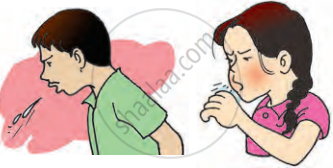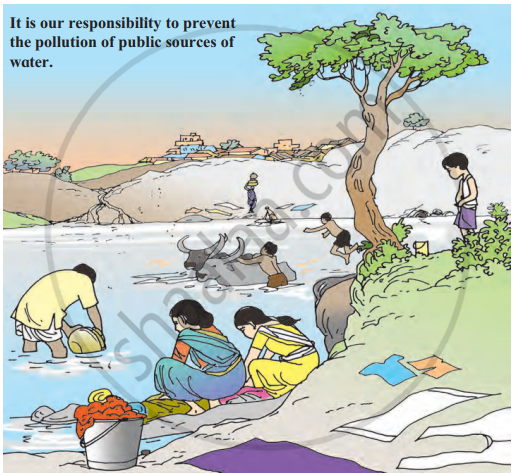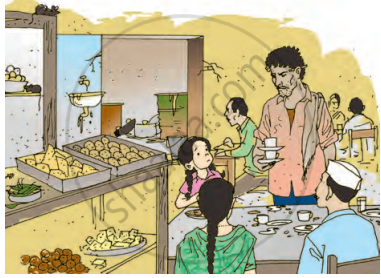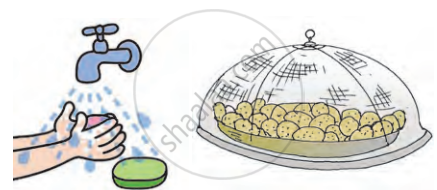Topics
Matter in Our Surroundings
- Matter (Substance)
- Characteristics of Particles (Molecules) of Matter
- The Solid State
- The Liquid State
- The Gaseous State
- Plasma
- Bose-einstein Condensate
- Heat and change of physical state
- Concept of Evaporation
- Concept of Melting (Fusion)
- Concept of Boiling (Vaporization)
- Concept of Sublimation
- Concept of Freezing (Solidification)
- Concept of Condensation (Liquefaction)
- Concept of Desublimation (Deposition)
Is Matter Around Us Pure
- Matter (Substance)
- Natural substances
- Mixture
- Types of Mixtures
- Solution
- Concentration of a Solution
- Suspension Solution
- Colloidal Solution
- Evaporation Method
- Solvent Extraction (Using a Separating Funnel Method)
- Sublimation Method
- Chromatography Method
- Simple Distillation Method
- Fractional Distillation Method
- Crystallisation Method
- Classification of Change: Physical Changes
- Chemical Reaction
- Pure Substances
- Compound
- Elements
Atoms and Molecules
- History of Atom
- Laws of Chemical Combination
- Law of Conservation of Mass
- Law of Constant Proportions (Law of Definite Proportions)
- Dalton’s Atomic Theory
- Atoms: Building Blocks of Matter
- Symbols Used to Represent Atoms of Different Elements
- Atomic Mass
- Relative Atomic Mass (RAM)
- Molecules
- Classification of Molecules
- Difference Between Atoms and Molecules
- Ions (Radicals) and Its Types
- Chemical Formula or Molecular Formula
- Molecular Mass
- Formula Unit Mass
- Mole Concept
- Atoms and Molecules Numericals
Structure of the Atom
- Existence of Charged Particles in Matter
- Atoms: Building Blocks of Matter
- Discovery of Charged Particles in Matter
- Protons (p)
- Electrons (e)
- Neutrons (n)
- J. J. Thomson’s Atomic Model
- Advantage and Limitations of Thomson’s Atomic Model
- Lord Rutherford’s Atomic model
- Limitations of Rutherford’s Atomic Model
- Neils Bohr’s Model of an Atom
- Electronic Configuration of Atom
- Valency
- Different Ways to Determine Valency
- Atomic Number (Z), Mass Number (A), and Number of Neutrons (n)
- Atomic Mass
- Isotopes
- Uses of Radioactive Isotopes
- Isobars
- Atoms and Molecules Numericals
The Fundamental Unit of Life
- Cell: Structural and Functional Unit of Life
- The Invention of the Microscope and the Discovery of Cell
- Cell Theory
- Organisms Show Variety in Cell Number, Shape and Size
- Prokaryotic and Eukaryotic Cell
- Simple Diffusion
- Concept of Osmosis
- Osmotic Pressure
- Structure of the Cell
- Plasma Membrane
- Semi-permeable Membrane (Cell Membrane)
- Cell Wall - “Supporter and Protector”
- Nucleus - “Brain” of the Cell
- Cytoplasm - “Area of Movement”
- Endoplasmic Reticulum (ER)
- Golgi Apparatus - "The delivery system of the cell"
- Lysosome - “Suicidal Bag”
- Mitochondria - “Power House of the Cell”
- Plastids
- Non-living Substances Or Cell Inclusion
- Plant Cell and Animal Cell
- Cell Division: an Essential Life Process
Tissues
- Tissues - “The Teams of Workers”
- Plant and Animals Tissue
- Plant Tissues
- Meristems or Meristematic Tissues
- Permanent Tissue
- Simple Permanent Tissues (Supporting Tissue)
- Complex Permanent Tissues
- Complex Permanent Tissue: Xylem Structure and Function (Conducting Tissue)
- Complex Permanent Tissue: Phloem Structure and Function (Conducting Tissue)
- Animal Tissues
- Epithelial Tissue
- Connective Tissue
- Muscular Tissue
- Nervous Tissue
Motion
- Motion and Rest
- Describing Motion
- Motion Along a Straight Line
- Types of Motion
- Measuring the Rate of Motion - Speed with Direction
- Rate of Change of Velocity
- Distance and Displacement
- Displacement - Time Graph Or Distance - Time Graph
- Velocity - Time Graphs
- Equations of Motion by Graphical Method
- Derivation of Velocity - Time Relation by Graphical Method
- Derivation of Displacement - Time Relation by Graphical Method
- Derivation of Displacement - Velocity Relation by Graphical Method
- Uniform Circular Motion (UCM)
- Motion (Numerical)
Diversity in Living Organisms
- Biodiversity
- Biological Classification
- Classification of Living Organisms
- Taxonomic Hierarchy of Living Organisms: Unit of Classification
- Five Kingdom Classification
- Kingdom Monera
- Kingdom Protista
- Kingdom Fungi
- Classification of Kingdom Plantae
- Kingdom Animalia
- Differences Between Plantae (Plants) and Animalia (Animals)
- Classification of Kingdom Plantae
- Kingdom Plantae: Thallophyta (Algae)
- Kingdom Plantae: Thallophyta (Fungi)
- Division II- Bryophytes
- Division III- Pteridophytes
- Division I-Gymnosperms
- Division II- Angiosperms
- Kingdom Animalia
- Phylum: Porifera
- Phylum: Cnidaria/Coelenterata
- Phylum: Platyhelminthes
- Invertebrate: Phylum Nematoda
- Phylum: Annelida
- Phylum: Arthropoda
- Phylum: Mollusca
- Phylum: Echinodermata
- Subphylum: Prochordata
- Chordata: Vertebrata
- Invertebrata and Vertebrata
- Taxonomy and Systematics
- Nomenclature
Force and Laws of Motion
Gravitation
Work and Energy
Sound
- Sound
- Production of Sound
- Propagation of Sound
- Sound Need a Medium to Travel
- Sound Waves Are Longitudinal Waves
- Characteristics of a Sound Wave
- Speed of Sound (Velocity of Sound)
- Reflection of Sound
- Echoes
- Reverberation
- Uses of Multiple Reflection of Sound
- Range of Hearing in Humans
- Ultrasonic Sound Or Ultrasound
- SONAR
- Human Ear
- Sound (Numerical)
Improvement in Food Resources
- Improvements in Food Resources
- Improvement in Crop Yields
- Crop Variety Improvement
- Crop Production Improvement
- Crop Protection Management
- Methods to Replenish Nutrients in Your Soil
- Manuring (Biomanuring)
- Fertilizers
- Improved methods of agriculture
- Agricultural Assistance Programme
- Animal Husbandry (Livestock)
- Dairy Farming
- Poultry Farming
- Pisciculture (Fish Farming)
- Apiculture (Bee Farming)
Why Do We Fall ill
- Health
- Disease
- Categories of Disease
- Acute and Chronic Diseases
- Causes of Disease
- Communicable Or Infectious Diseases
- Infectious Agents
- Manifestation of Diseases
- Modes of Transmission of Diseases
- Organ-specific and Tissue-specific Manifestations
- Principles of Prevention of Diseases
- Principles of Treatment of Diseases
Natural Resources
- Natural Resources
- Biosphere: The Domain of Life
- Air is a Mixture
- Atmosphere and Its Layers
- Wind: The Movement of Air
- Rain
- Water: Our Lifeline
- Where Do We Get Water From?
- Availability of Water
- Importance of Water
- Water Pollution and Its Causes
- Mineral Riches in the Soil
- Biogeochemical Cycle
- Water Cycle
- Nitrogen Cycle
- The Carbon Cycle
- The Oxygen Cycle
- Ozone
- Ozone Layer Depletion
- Spread of disease through air
- Spread of disease through water
- Spread of disease through food
- Spread of disease by insects
- Spread of disease by direct contact
Spread of Disease through Air:
Some diseases, like influenza (flu), spread through the air. When a person who has the disease coughs, sneezes, or spits, tiny droplets of saliva or spit come out of their mouth. These tiny droplets contain germs (like bacteria or viruses) from their body. The germs mix with the air, and if another person breathes in that same air, the germs can enter their body, making them sick too.
- Diseases that affect the throat and chest, like tuberculosis, swine flu, and influenza, can spread through the air.
- For example, if someone with swine flu sneezes in a room, the germs float in the air. When other people breathe in, they might catch the disease.
- Cover your nose and mouth when you cough or sneeze to prevent the spread of diseases through the air.
- This prevents germs from spreading into the air and protects other people from getting sick.

Do not cough or spit in the open
Spread of Disease through Water:
- Diseases like typhoid, cholera, diarrhoea, and jaundice spread through contaminated water.
- The germs that cause these diseases are present in the faeces (poop) of the person who has the disease.
- If these faeces get mixed with a water source, such as a river, pond, or well, the germs enter the water.
- When someone drinks contaminated water (water with germs in it), the germs enter their intestines and can make them sick.
- For example, if someone drinks water from a well that has been contaminated with germs from a sick person’s faeces, they could get cholera or diarrhoea.
To stop the spread of diseases through water, it is important to:
- Avoid washing clothes or bathing in rivers, ponds, or wells used for drinking water.
- Do not defecate (poop) near water sources.
- Always boil or purify drinking water to kill any harmful germs.
- Make sure to wash your hands properly after using the toilet and before eating.

Spread of Disease through Food:
Sometimes, many people get sick with gastro or diarrhoea after eating contaminated food at a function or party. This is known as food poisoning.
- Food poisoning happens when germs enter our food and make it unsafe to eat.
- Flies often sit on dirty things, like garbage or even faeces (poop) from someone with an intestinal disease.
- When the flies sit in these dirty places, germs from the faeces stick to their legs.
- If the same flies sit on our uncovered food, they leave the germs on it.
- When we eat that contaminated food, the germs enter our bodies and can make us sick.
- When someone with an intestinal disease touches or handles food without properly washing their hands, the germs from their hands can get into the food.
- If other people eat that food, they can also get sick from the germs.
- This is why it’s important to always wash hands thoroughly before preparing or serving food.
To Prevent Diseases from Spreading Through Food:
- Always keep food covered so that flies and dust cannot land on it.
- Cleanliness is very important when preparing or serving food.
- Make sure that the food you eat is fresh and well-cooked.
- Avoid eating food that looks spoilt or has been left out uncovered.


Wash your hands clean. Keep food covered
The Spread of Disease by Insects:
Some insects, like mosquitoes and fleas, can carry germs that make us sick.
- For example, a person can get malaria from the bite of a special type of mosquito.
- When a mosquito bites someone who has malaria, it sucks blood from that person.
- The malaria germs in the person’s blood enter the mosquito's body.
- When an infected mosquito bites another person, the mosquito's germs enter that person's body.
- This is how the disease spreads from one person to another.
- Besides mosquitoes, insects like fleas can also spread diseases. They carry germs from one person or animal to another through their bites.
To stop diseases from spreading, we need to prevent insects like mosquitoes from breeding. Mosquitoes breed in stagnant water (standing water), so it’s important to:
- Remove stagnant water from around our homes (like water in buckets, pots, or puddles).
- Cover water containers so mosquitoes can’t lay their eggs in them.
- Use mosquito nets and repellents to avoid mosquito bites.
Spread of Disease by Direct Contact
- Some diseases, like ringworm and scabies, affect the skin. The germs that cause these diseases live on the skin of the person who is sick.
- If someone touches the skin of a person who has ringworm or scabies, they can catch the disease because the germs spread through direct contact.
- The germs can also spread if you wear clothes or use towels that belong to the person with the disease.
- This is why it's important not to share clothes or personal items with someone who has a skin disease.
To stop the spread of skin diseases, avoid touching someone who has a skin infection like ringworm or scabies.
- Do not share clothes, towels, or bedding with someone who has a skin disease.
- Always keep your skin clean by bathing regularly and washing your hands.
